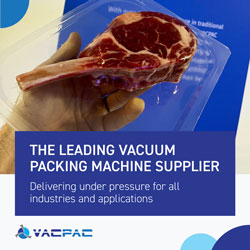Wagyu Branded Beef Competition
Recognising the most exciting and innovative Wagyu brands
Celebrating Excellence in Wagyu Beef Production!
Entries for the 2026 Wagyu Branded Beef Competition (WBBC) have now closed!
As the only branded beef competition supported by an independent breed representative organisation, the competition is one not to be missed. The WBBC presents an unparalleled opportunity for Wagyu brands to showcase their products’ extraordinary quality. We are committed to advancing Wagyu as the world’s luxury beef and promoting excellence in its production.
By participating in this competition, you have the chance to demonstrate your dedication to quality Wagyu production and gain well-deserved recognition. Let your passion for premium Wagyu shine in the 2026 Wagyu Branded Beef Competition.
2026 Key Competition Dates
For entry and delivery related questions, please get in touch with Ella Patterson (AWA Communications Officer).
Entries Open: Monday 29th September 2025
Entries Close: Friday 10th October 2025
WBBC Deliveries: 24th November – 28th November 2025
Judging Days: 1st December – 5th December 2025
2026 Class descriptions
CLASS ONE
Fullblood Japanese Black Steak
CLASS TWO
Purebred Wagyu Steak
CLASS THREE
Open Crossbred Wagyu Steak
CLASS FOUR
Open F1 Wagyu Steak
CLASS FIVE
Commercial Wagyu Steak Marble Score 5-7
MAJOR AWARDS
Each year, the judges are amazed by the size and quality of the entries nominated by our Australian Wagyu supply chains. The Gary McPherson Memorial Packers Award pays homage to out mate Gary and recognises the most visually appealing entry, typifying the excitement and anticipation of the Wagyu dining, as judged by the back-room handlers preparing entries for the judging days.
The Reserve Champion is the second place overall highest score across all entries in the WBBC. The entry can be from any category and the Reserve Champion recognised outstanding achievement in the production of Wagyu beef to its highest standards.
The Grand Champion is the entry with the highest overall score across all categories in the WBBC. Each year, the Grand Champion is celebrated by all in the Wagyu Sector as being the pinnacle of Wagyu production for the year within the WBBC, the only Wagyu-specific beef competition that puts the best Wagyu brands and new entries head-to-head to enable continual improvement in Wagyu quality in search of the ultimate eating experience.
Judging Terminology
Wagyu Branded Beef Judging Terminology
What does the Wagyu taste like? What flavours are present? And how does it feel when I eat it?
These are the questions our judges ask when comparing Wagyu beef.
Each aspect will be influenced by marbling, the firmness and texture of the beef, as well as the hints of how the Wagyu cattle were raised.
To describe how it feels to chew Wagyu beef we use: chewy, enjoyable-chewy, fibrous, granular, greasy, mushy, silky, tender, textureless, tough, very-tender, other.
Juiciness
The impression given from the release of the meat’s water-holding capacity on first eating defines the juiciness. The melted intramuscular fats in highly marbled beef will be a major contributor to this but will also include the consumer’s saliva. The salivation response will be tempered by aroma and hunger.
Descriptors: Very-dry, dry, slightly-dry, initial juiciness, very juicy, lasting juiciness.
Flavour
There are five taste receptor groups; sweet, salt, bitter and sour plus the Japanese flavour ‘umami’ (which means beefy, savoury, brothy or delicious). There are up to 880 volatile compounds of different chemical classes reported in cooked Wagyu beef.
Descriptors: beany, bitter, buttery, caramel, cereal, chemical/medicinal, citrus, clean and fresh, creamy, dairy, earthy, fatty, fishy, herbal, kerosene, livery, low, putrid, metallic, nutty, popcorn, rancid, rich, rounded, salty, soapy, sour, stale, sweet, toasty, unami, other.
Aroma
What does the Wagyu beef smell like? The perception of the volatile characteristics of food is perceived by receptors primarily in the nose.
Descriptors: Beefy, caramel, cardboard, cereal, citrus, sulphury, fishy, medicinal/chemical, herbaceous, putrid, stale, musty, livery, kerosene/solvent, low/faint, toasty, popcorn, fresh, floral, pungent, other.
Past competitions
STANBROKE CLAIMS GRAND CHAMPION AT 2025 WAGYU BRANDED BEEF COMPETITION
Sanchoku Pure Wagyu by Stanbroke took home the prestigious title of Grand Champion of the 2025 Wagyu Branded Beef Competition (WBBC)in front of a crowd of 550 adoring steak enthusiasts.
Hosted by the Australian Wagyu Association (AWA) the WBBC is recognised as the most prestigious event of its kind in Australia and each year, takes place on the opening night of the WagyuEdge conference. This year’s competition awards evening took place in Perth, WA and showcased the exceptional quality, innovation and heritage that sets the Australian Wagyu industry apart.
Now in its 14th year, the WBBC continues to reinforce Australia’s leadership in Wagyu production, with an increasing number of premium entries reflecting the dedication and excellence of producers nationwide.




